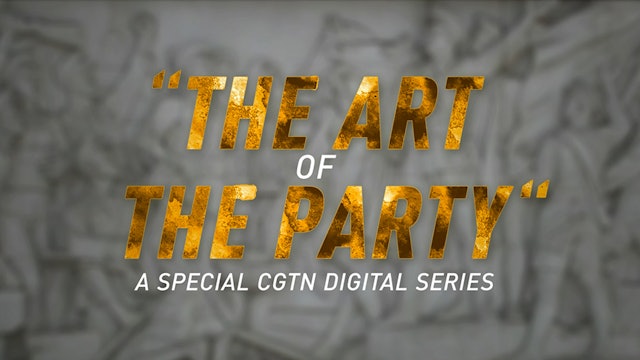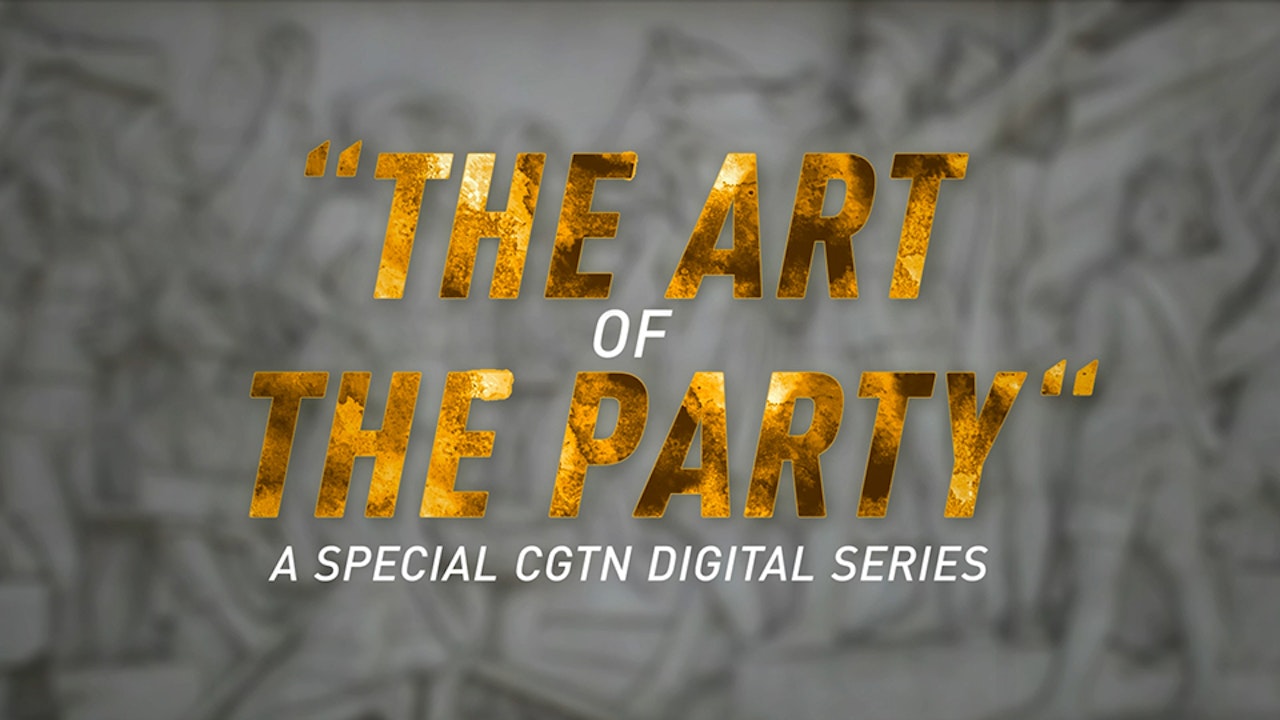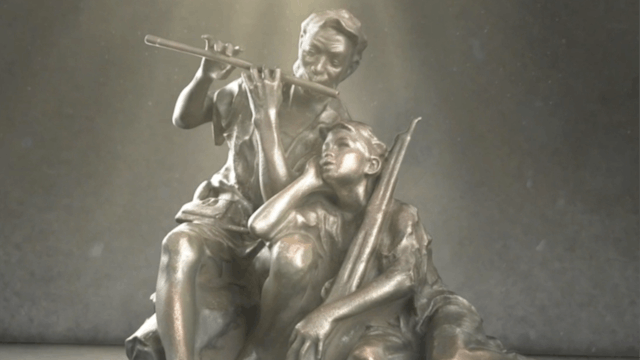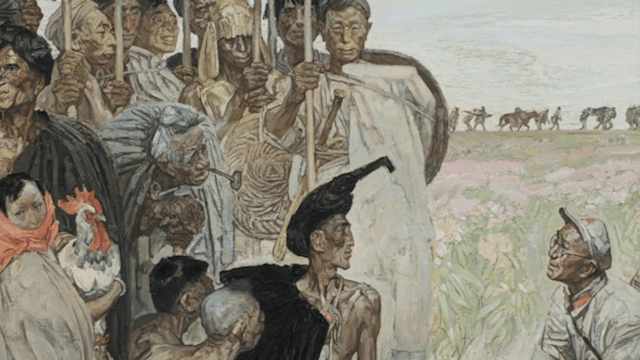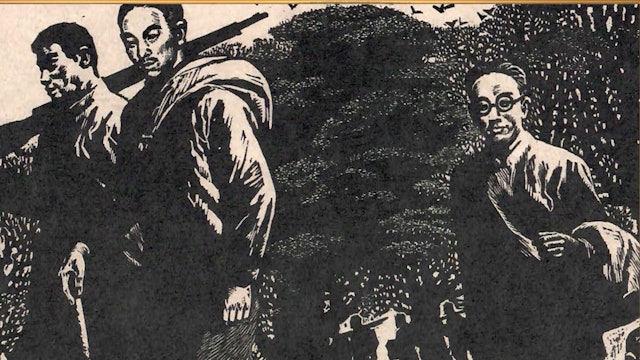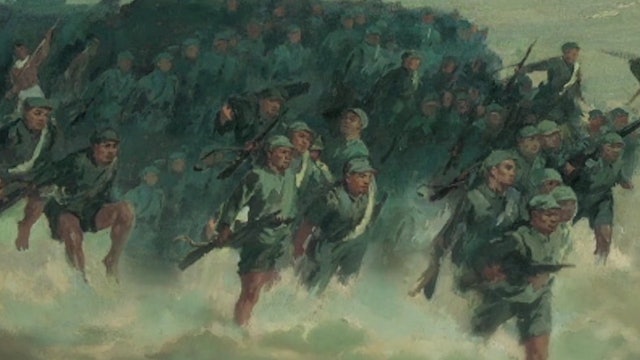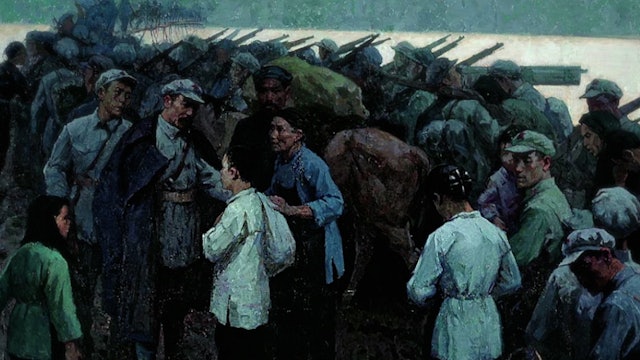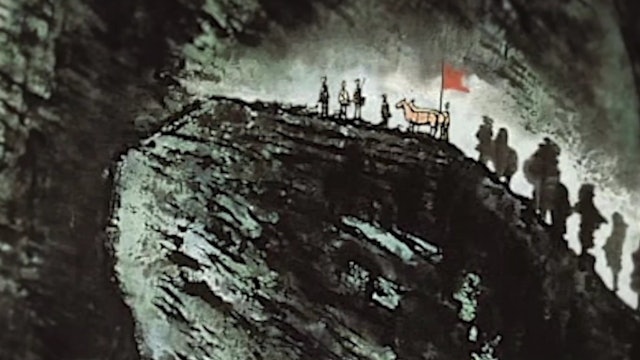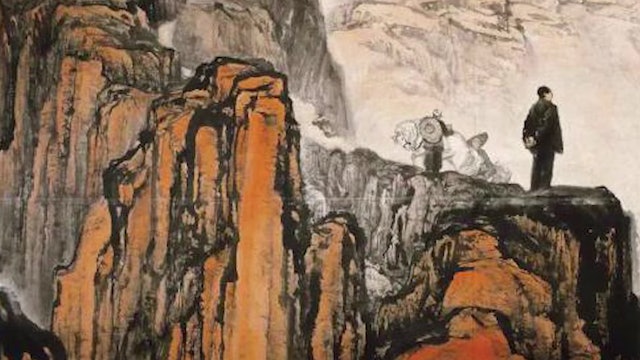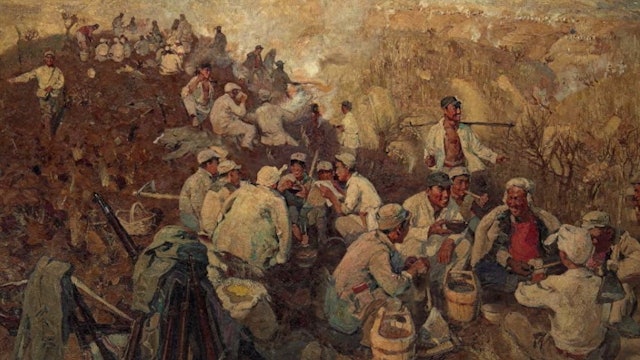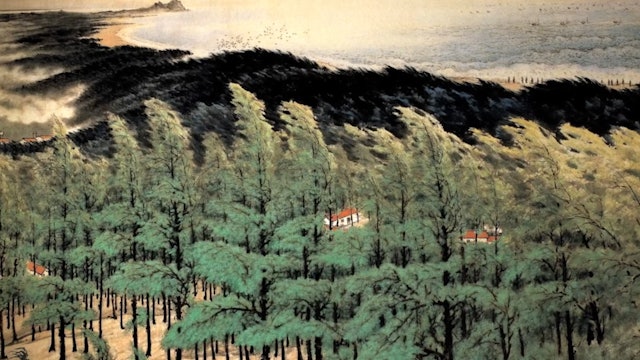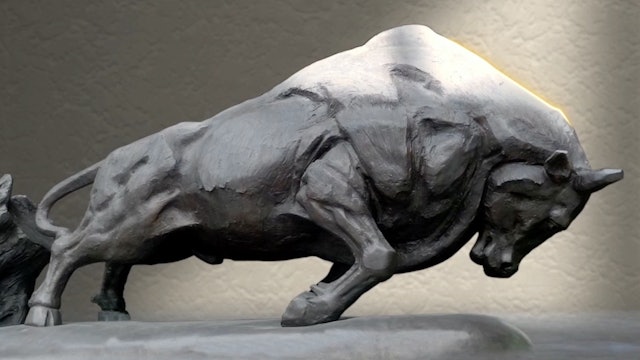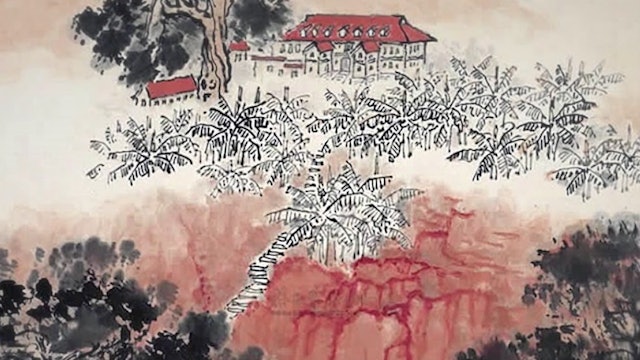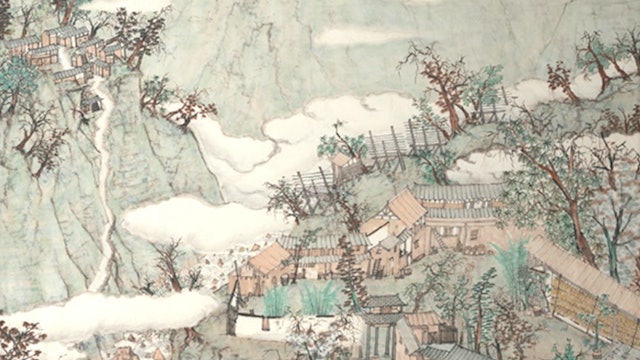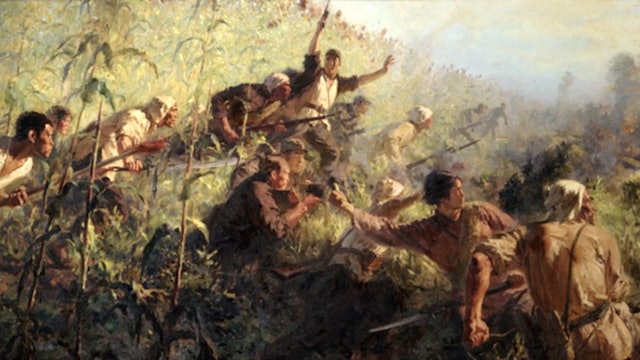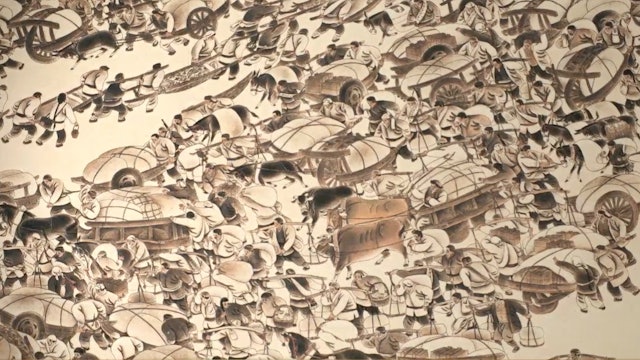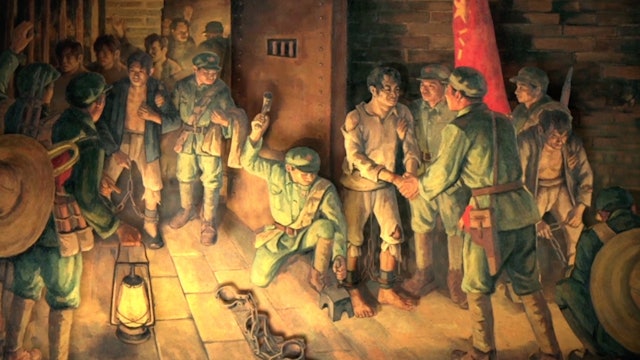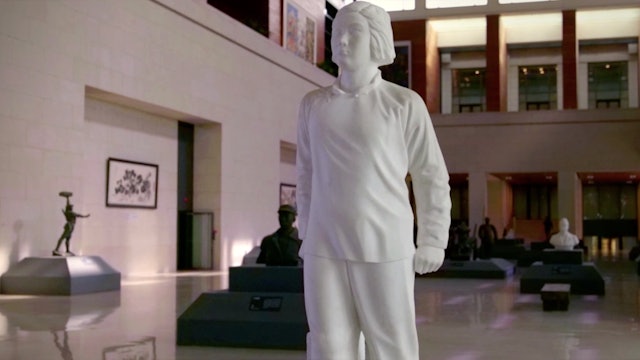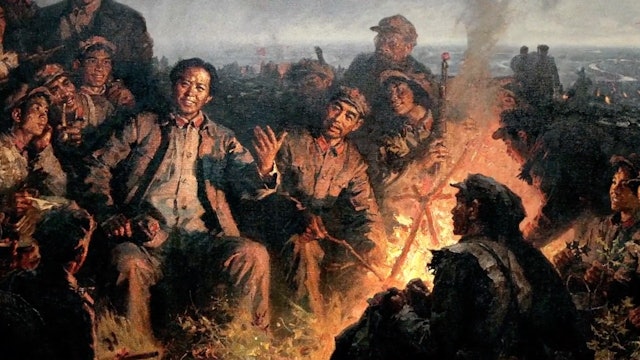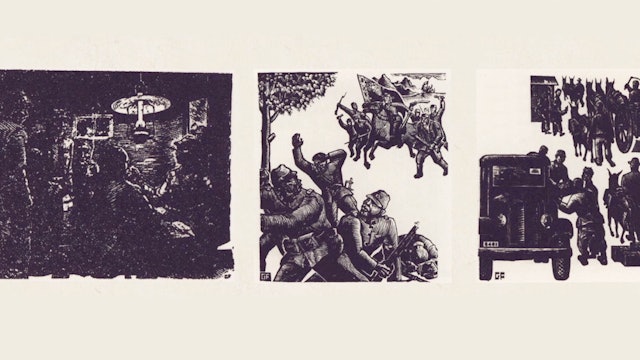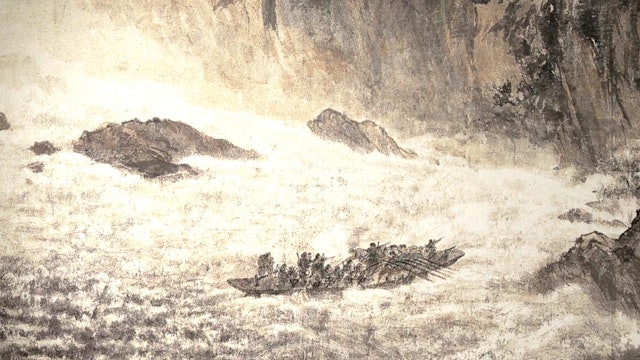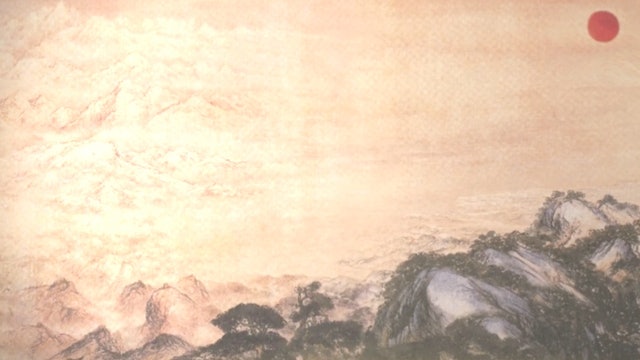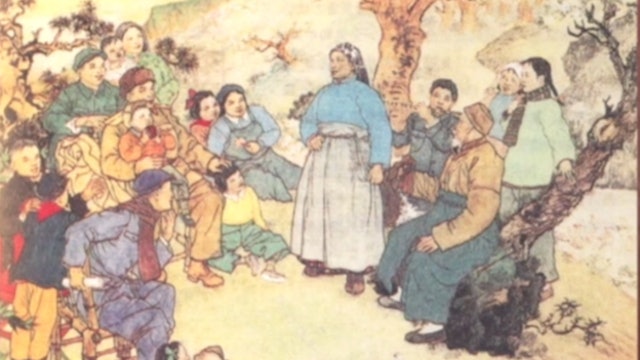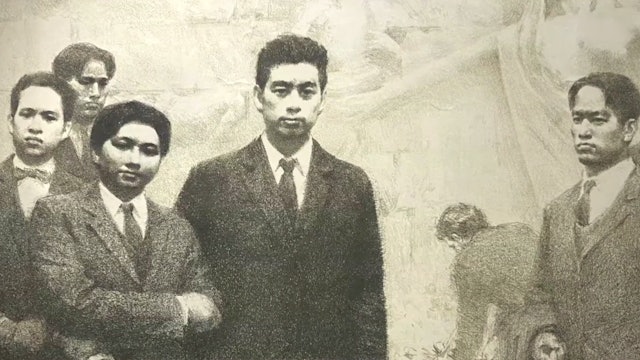Walk through CPC's history
"The Art of the Party" series shows you the historic moments of the Communist Party of China and its founding.
-
The hard time
The Qiongya Column is known as “the armed forces of the people.” The military contingent was founded during a peasant uprising in 1927. This work conveys two Qiongya Column soldiers, one old, one young, who relied on each other through extremely difficult conditions.
-
Yi Ethnic Group Alliance with the Red Army
The painting, “Yi Ethnic Group Alliance with the Red Army” depicts the moment in 1935 when the chieftain of a Yi clan in Mianning County, southwest of Sichuan Province, entered into an alliance with the Red Army General.
-
Great Hong Kong Rescue in 1942
This woodcut print was created by Chinese artists Cai Dizhi and Xu Qinsong in 1981. It depicts CPC-led guerrilla forces rescuing Chinese cultural celebrities and anti-Japanese patriots from enemy control and transferring them to safety in 1942.
-
Crossing the Yellow River at Night
In 1947, the Chinese People’s Liberation Army managed to cross the Yellow River after three nights of combat, which became a turning point in China’s War of Liberation (1945-1949).
-
Farewell on the banks of Yudu river
In 1934, Chinese Red Army soldiers led by the CPC headed off on the historic Long March from Yudu County in southeast China’s Jiangxi Province. Crossing the Yudu River was their first challenge along the journey, and they received a lot of support from Yudu villagers.
-
The Long March
The Long March between 1934 and 1936 was an epic military maneuver by Chinese Communist forces. Soldiers had traversed 14 provinces along this journey. Part of our ‘The Art of the Party’ series.
-
Turning to Fight in Northern Shaanxi
China’s civil war started in 1946 when the Kuomintang launched an attack on PLA forces in the strategic Central Plain Liberation Area. But the PLA triumphs in Northern Shaanxi were a turning point in the Chinese revolution.
-
Great Production Movement in Nanniwan
In 1941, Chinese soldiers launched the great production movement in Nanniwan in response to the KMT’s economic blockade on the base area controlled by the CPC. This historic movement has brought changes and prosperity to the region.
-
Green Great Wall
China beat many countries in bringing up forest coverage for the past 70 years. The achievement has inspired many Chinese artists. One of them is Guan Shanyue. He painted the forest there with ink and wash, and named it “Green Great Wall.”
-
Pioneering Bull
The sculpture, “Pioneering Bull” captures the zone’s pioneering spirit, diligence, dedication, and hard work - qualities associated with Shenzhen.
The Party’s reform and opening-up policy transformed Shenzhen from a small fishing village into a modern metropolis. -
China's Border Troops
The painting, “China’s Border Troops” depicts Chinese soldiers patrolling the Chinese-Mongolian border in harsh weather. Part of our ‘The Art of the Party’ series. China’s border troops have played a significant role in guarding the country’s sovereignty and security.
-
Red Crag
This painting, “The Red Crag,” depicts the CPC’s wartime mansion, where party members strengthen their alliances in the War Against Japanese Aggression. The site would oversee a major betrayal by the KMT against the CPC, killing scores of soldiers, but serving as a turning point in the fighting. ...
-
New Look for an Old Village
The painting, “New Look for an Old Village” shows the community of the Lisu people, an ethnic group in southwest Yunnan Province, with a new look after an end to extreme poverty. Part of our ‘The Art of the Party’ series.
-
The Guerilla Soldiers
The painting, “The Guerilla Soldiers” shows the guerilla soldiers took cover in extensive farmland of tall crops during China’s War of Resistance against Japanese Aggression.
-
Support of the Frontline
The painting, “Support the Frontline” shows the PLA managed to mobilize peasants to bring supplies and remove the dead and wounded from the frontline during the civil war between the national force Kuomintang and the CPC.
-
Unlocking Shackles
The painting, “Unlocking Shackles” is based on Chinese artist Hu Yichuan’s own experiences, as a tribute to those who gave their lives fighting for the liberation of China.
-
The Glory of Liu Hulan
Liu Hulan was a young hero during the Chinese People's War of Liberation. She didn’t betray her loyalty to the Communist Party when she faced threats from their enemies. She was beheaded at the age of 15. To memorialize her, a Chinese artist created a sculpture of Liu Hulan in 1951. Part of our ‘...
-
Revolutionary Ideals Higher Than Heaven
This oil painting, “Revolutionary Ideals Higher than Heaven,” was completed by Chinese painter Shen Yaoyi in 1976. The painting shows Mao Zedong giving a rousing speech to Red Army soldiers as they crossed the Songpan grasslands in Sichuan Province.
They made the journey between 1935 and 1936 du...
-
The Five Heroes of Langya Mountain
The painting, “The Five Heroes of Langya Mountain” shows a historical event that five courageous Chinese soldiers fought invaders from the Japanese army on top of Mount Langya in 1941.
-
Battle of Pingxing Pass
The painting, “Battle of Pingxing Pass” depicts the first major victory for the Communist army in its fight against Japanese invaders in 1937. The victory shattered the myth that the Japanese were invincible.
-
Force Crossing the Dadu River
The painting, “Force Crossing the Dadu River” shows a historical event that Eighteen warriors were forced to cross the Dadu River during the Long March. It conveys how the Red Army prevailed against all odds to achieve victory.
-
Art of the Party: The Land So Rich in Beauty
The nine-meter-long ink brush painting, “Jiangshan Ruci Duojiao” shows the magnificent mountains and rivers of China, depicting many famous landscapes including the Great Wall and the Yellow River, forming beautiful scenery and a broad vision. Part of our 'The Art of the Party' series.
-
The Origins of “Singing the Spring”
In 1956, China was experiencing a rebirth. China's first Five-Year Plan for economic rehabilitation was being implemented. Influenced by the invigorated atmosphere of society, Cheng Shifa created the Chinese painting "Singing the Spring of the Motherland."
Part of our 'The Art of the Party' s...
-
Finding a path to save China in early 1920s
This lithograph was created by Chinese artist Wen Guozhang in 1978.
It profiles some young progressive Chinese students who went to France under a work-study program in the early 1920s to establish their communist beliefs.
They all later became the founding fathers of the People's Republic of C...

